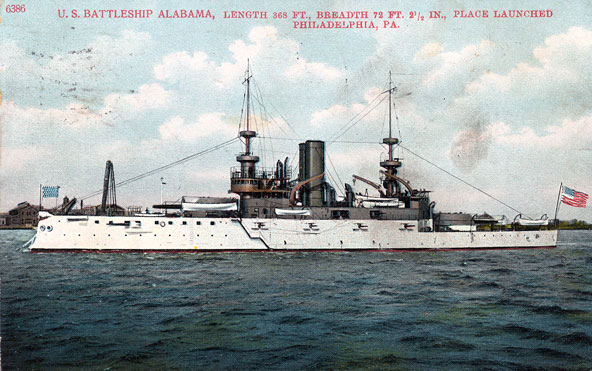Apologies, but no results were found for the requested archive. Perhaps searching will help find a related post.
captains of the fleet
- Captain Osterhaus, USS Connecticut (flagship)
- Captain Vreeland, USS Kansas
- Captain Hubbard, USS Minnesota
- Captain Potter, USS Vermont
- Captain Wainwright, USS Louisiana
- Captain McCrea, USS Georgia (flagship)
- Captain Nicholson, USS Nebraska
- Captain Southerland, USS New Jersey
- Captain Murdock, USS Rhode Island
- Captain Schroeder, USS Virginia
- Captain Niles, USS Louisiana (flagship)
- Captain Sharp, USS Virginia
- Captain Merriam, USS Missouri
- Captain Bartlett, USS Ohio
- Captain Beatty, USS Wisconsin
- Captain Bowyer, USS Illinois
- Captain Hutchins, USS Kearsarge
- Captain Cowles, USS Kentucky
- Captain Harber, USS Maine
- Captain Veeder, USS Alabama
- Captain Qualtrough, USS Georgia
- Captain Doyle, USS Missouri
- Captain Fletcher, USS Vermont
- Captain Howard, USS Ohio
Commodore Veeder was born in New York in 1854. He entered the U. S. Naval Academy on September 24, 1868 and graduated May 31, 1873. Veeder was promoted to Ensign in July 1874 and spent his first tour on board USS TUSCARORA until 1875. In 1876 he served on the European Station in USS ALLIANCE and VANDALIA until he was ordered to the Torpedo Station in 1880 for torpedo instruction.
For the next three years, LT(jg) Veeder spent time in USS RICHMOND, PALOS and ASHUELOT when in 1884 he was sent to ordnance school.
After a year at ordnance school, he was promoted to Lieutenant and ordered on special duty with the Bureau of Navigation for the next four years. In 1890 LT Veeder was assigned to the Bureau of Equipment and Electric Lighting and also spent time on board USS ENTERPRISE and YORKTOWN. After three years in YORKTOWN, LT Veeder was ordered to the Bureau of Equipment in 1893.
During the next ten years Veeder was the Executive Officer of several ships including USS BANCROFT (1896) and SCINDIA (1898). He was promoted to Lieutenant Commander in 1899 and also commanded USS IRIS (1899) and USTS HARTFORD (1903).
In 1905, while attached to the Naval Academy at Annapolis, Maryland and Commanding Officer of HARTFORD, CDR Veeder was also the Officer in Charge of all vessels stationed in Annapolis.
In 1906 he assumed command of the US torpedo boat TALBOT in addition to his present duties. In 1907 he was promoted to Captain, detached from the Naval Academy and ordered to USS ALABAMA as Commanding Officer.
On June 30, 1913 CAPT Veeder was placed on the retired list of the U. S. Navy with the rank of Commodore. He fought the retirement and even sent a bill to Congress to restore him to the active list. This bill was passed in Congress but vetoed by President Taft.
Veeder spent most of his naval career on temporary or special duty on board several ships and at many of the eastern United States Navy Yards. His job was to oversee the installation and inspection of electric lighting plants that were being installed at these sites. He was often called back to shore duty due to "public demand" to work on such projects usually with the Bureau of Equipment and Electric- Lighting.


